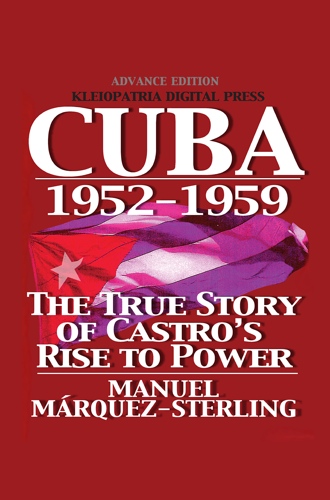November 30, 1956
Student militant organizations Federación Estudiantil Universitaria (FEU) and DR (Directorio Revolucionario) pressured the University Council (Consejo Universitario) to close the University of Havana as a protest against Batista. The students claimed that under dictatorship no classes should be held at all.
The university closure was imposed by a militant minority of radical students and professors—not by Batista. Since the university was an autonomous and self-governing institution the University Council—not the government—had sole authority to close the university.
The action was a propaganda coup—the foreign press didn’t realize it was the tyrannical dictatorship of revolutionary students allied with radical faculty that shut the university. As the militants hoped, the international press blamed Batista’s "tyrannical dictatorship" for the closure. The closure left more than ten thousand students idle, further increasing pressure on the government. Batista’s regime, however, continued paying faculty and staff emoluments and salaries during the closure (which lasted until 1959). This demonstrates that the Batista regime which the revolutionaries claimed could not be negotiated with, in fact was able and willing to make and honor agreements, even after they proved disadvantageous.
Student revolutionaries acting in solidarity similarly closed down the other two Cuban state universities (Oriente and Santa Clara) by year end, leaving only the three private universities open. This, of course, had a particularly adverse impact on less-affluent students for whom attending university represented a financial sacrifice and a path to gainful employment.
Paradoxically, the University autonomy used so dictatorially by anti-Batista university radicals had been promulgated and codified by the government Batista’s first coup established. One of Machado’s dictatorial acts in 1930 had been to close the University as reaction to political opposition. Largely in response to that, university autonomy was granted through a presidential decree by Ramón Grau San Martín's provisional government on October 6, 1933, and affirmed by a later official Presidential decree on February 22, 1937. University autonomy was enacted into statutory law on January 8, 1937 through the Education Law (Ley Docente) of 1937.
In retrospect it is clear that the revolutionary students and their radical faculty allies were advocates of academic freedom only so long as it furthered their agenda. Among Castro’s earliest acts were closing private universities and schools, ending university autonomy and tenure, giving the government absolute control over university administration including faculty appointments and admissions. This brought to an end the era of university radicals (and academic freedom), since universities no longer had room for faculty and students not in complete agreement with the government.
 |  |
| Havana University, March 1957 (photo: Grey Villet/LIFE) | Havana University, April 1958 (photo: Joseph Scherschel/LIFE) |
based on Manuel Márquez-Sterling's Cuba 1952-1959 and
Cuba 1952-1959 Interactive Timeline
Cuba 1952-1959 Interactive Timeline


 Mobile subscription
Mobile subscription



No comments:
Post a Comment